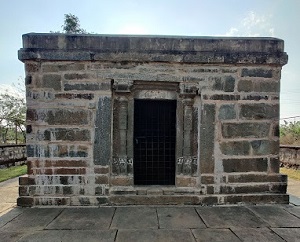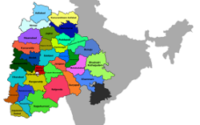Pranaveshwara Lake – The First Lake of Karnataka?
Pranaveshwara Lake – The First Lake of Karnataka?
The Chandavalli lake mentioned in the Chandravalli inscription of Chitradurga (Period of Mayura) is believed to be the first lake in Karnataka. However, when the history of Talagunda is researched in depth, evidence is found to say that the ‘Pranaveshwara Kere’, where traces of the Satavahana period are found, is even older than that.
Pranaveshwara i.e. Shiva, worshiped by Satavahanas of Talagunda was in the shelter of water. The retaining wall of the lake close to the temple is made of Satavahana-era bricks. At the start of the lake, there is burnt red rock dating from the Satavahana era.
The late Raghunath Bhatta, a senior researcher, mentioned the discovery of bricks in the footnote of his work ‘Sasanakale’. This brick is rectangular, about 42 cm long, 24 cm wide, and 8 cm thick.
There is an almost narrow pond, Kalyani, seems to have expanded during the reign of Kakutsavarman of Kadamba dynasty around 450 AD. In order to maintain the Shivalaya in Talagunda, he constructed a lake. This lake is still very noticeable and is close to the current Pranaveshwara temple.
Additionally, during the excavation, a Satavahana-era floor covering was discovered on the Pranaveshwara temple grounds.
The pillar inscription here takes the existence of this temple to the period of Satavahana, and there are possibilities that the maintenance of the temple may have been extended to a single month during the period of Kakutsavarman. History researcher Ramesh B. Hirejambur says it is accurate to assert that it was a source of water during the Satavahana era.
Around the Pranaveshwara lake, a pauli, or brick wall, from the Shatavahana era may be observed. Therefore, it is unmistakably the earliest lake in Karnataka, according to historian Sripada Bichchugatti.
In the first-ever experimental excavation in 2012-13, 13 gold coins were found near the existing dust bin near the entrance of the Pranaveshwara temple in Talagunda village.
When the main entrance steps were removed and excavated, 13 gold elephant image varahas of the Ganga period were found in the 1st and 2nd layer of earth. The Ganges are credited with bringing the Elephant Varahas into circulation. These coins belong to the period of Durvinita (5th century), Bhu Vikrama (6th century), Sri Vikrama (6th century).
The name of the then king is written on the elephant decorated in these coins. What is special is that although the Gangas had their own script coins, this is the first record that the local Kadamba script has been used in the coins found in Talagunda, a Kadamba region. In the 3rd and 4th strata, a ‘Ka’ shaped gold pulse coin of the time of Kakutsavarman was found.
A potin coin of Satavahana (2nd century) was found in the 5th layer. Copper, lead, and tin were used to make Potin coins. It can be folded and fixed like rubber. Also, another coin from the time of Vijayanagara kings was also found here.
Inscriptions during the period of AD 1180 of Vikramaditya and Kalachuri Sangamana of the Kalyani Chalukyas have been found here. The copper inscription has a total of five plates and contains Nandi’s seal. This Sanskrit inscription was written in Devanagari script.
This inscription, which has a total of 168 lines, contains the details of the donation made by Keshavaditya, the minister of Ballala of the Hoysalas, to the Brahmins when Sankamana was ruling Banavasi Nadu.




